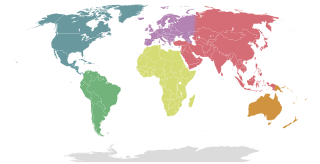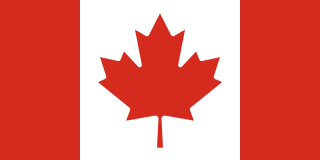 W
WAcadian cuisine is the traditional dishes of the Acadian people. It is primarily seen in the present-day cultural region of Acadia. Acadian cuisine has been influenced by many things throughout its history, namely the Deportation of the Acadians, proximity to the ocean, the Canadian winter, soil fertility, the cuisine of Quebec, the cuisine of various Indigenous nations such as the Mi'kmaq, American cuisine, and English cuisine. The cuisine of immigrants and trade with specific regions of the world have also played small roles.
 W
WAhmadiyya in Canada is a religious sect within the Islamic community of Canada. The earliest known Ahmadis visits of the country were back in 1923. Later, Ahmadis came to Canada from various parts of the world, in particular from Pakistan, as a result of their declaration as a Non-Muslim Community by the Pakistani Government legislations in 1974 and again in 1984. The Community was first officially registered in Canada in 1966 in Ontario as the "Ahmadiyya Movement in Islam (Ont) Inc." and the first missionary assigned to Canada was Maulana Syed Mansoor Bashir Sahib. The first missionary assigned to Western Canada was Maulana Ali Haider Upal sahib Shaheed, who was appointed in Vancouver in 1982, and later, stationed in Calgary and in Saskatoon. As the only missionary stationed in Western Canada, he served the Ahmadiyya Jama'ats in Vancouver, Calgary, Edmonton, Saskatoon, Regina, Lloydminster, and Winnipeg between 1982 and 1986.
 W
WAll-dressed chips are a potato chip flavour popular in Canada. Ruffles, a major producer of all-dressed potato chips, describes the flavour as a mix of tomato ketchup, barbecue sauce and salt & vinegar.
 W
WThe B.C. roll is a Maki-zushi (roll), a kind of sushi containing barbecued salmon and cucumber. It is prepared as an uramaki roll, a style of sushi in which the rice is on the outside. Often the roll contains barbecued salmon skin coated in a sweet sauce. There are many variations of this roll including barbecued salmon skin with mayo.
 W
WCanada has participated in the Eurovision Young Dancers twice since its debut in 1987. They remain the only North American country to ever participate in a Eurovision event, and were also the only Associate Member of the European Broadcasting Union to participate in any Eurovision event until Australia's Eurovision Song Contest debut in 2015.
 W
WThe Canadian Duality Flag is an unofficial flag that was originally circulated to demonstrate the unity of Canada during the lead-up to the 1995 Quebec referendum, at rallies for the "no" side. The Duality Flag design was chosen to represent explicitly the Francophone and Anglophone populations on the national flag by adding blue stripes to the red sections, roughly in proportion to the number of Canadians who are primarily French-speaking. The blue was chosen as it is the main colour that is used on the flag of Quebec.
 W
WCanadiana is a term used to describe things, ideas, or activities that concern or are distinctive of Canada, its people, and/or its culture, especially works of literature and other cultural products. It can also refer to the collection of such materials, such as in cultural fields like music or art.
 W
WGinger beef is a Canadian Chinese dish made from beef, ginger, and a distinctive sweet sauce.
 W
WHoney garlic sauce is a sweet and sour sauce that tastes like a mix between honey and garlic, popular in Canada. Honey garlic is one of the many sauces put on chicken wings, ribs, and other foods such as meatballs.
 W
WA house dish is a very large wooden dish, often ornately carved and painted in various human or animal figures, used in First Nations ceremonies in British Columbia. House dishes may be reserved only for special foodstuffs and not used for more common fare.
 W
WMaple butter, also known as maple cream or maple spread, is a confection made from maple syrup, by heating the syrup to approximately 112 °C (234 °F), cooling it to around 52 °C (126 °F), and beating it until it reaches a smooth consistency. It is usually made from Grade A Light Amber syrup, and is a light tan color.
 W
WMaple slaw is a Canadian variation of coleslaw consisting of maple syrup, cabbage, onion, fish, and seasoning.
 W
WMaplewashing or maple washing refers to the alleged tendency by Canadian governments, institutions, and media to perpetuate the notion that Canada is morally superior to other countries, thus sanitizing and concealing negative historical and contemporary actions. The term was coined by Jacobin columnist Luke Savage.
 W
WMoroccan Canadians are Canadians of full or partial Moroccan descent, as well as people from the state of Morocco who are ethno-linguistic and religious minorities. According to the 2011 Census, there were 71,910 Canadians who claimed full or partial Moroccan ancestry, an increase compared to the 2006 Census. A large minority of Moroccan Canadians, comprising 27,000 people, are Moroccan Jews.
 W
WRubaboo is a common stew or porridge consumed by coureurs des bois and voyageurs and Métis people of North America. This dish is traditionally made of peas and/ or corn, with grease and a thickening agent that makes up the base of the stew. Pemmican and maple sugar were also commonly added to the mixture. Rubaboo that is made by the Plains Metis is often made with pemmican, rabbit, prairie chicken or sage hen and a wide variety of wild vegetables such as wild parsnip onion, turnip, and asparagus that can all be added to the food with preference. The thickened mixture was later re-served as “rowschow” (re-chaud). Sometimes, It is occasionally spelled Rubbaboo. Other sources describe it as consisting primarily of boiled pemmican, with thickening agents added when available.
 W
WSchmoo torte is a Canadian dessert. Although it is relatively popular and well-known nationwide, it is most famous in Western Canada, especially Manitoba. It is a torte with layered whipped cream, caramel, and nuts, commonly made using angel food or sponge cake.
 W
WA sour cream doughnut is a type of doughnut that incorporates sour cream into its batter. This type of doughnut is often dipped in a vanilla flavored glaze after frying and usually has no filling. While the exact date or place of origin for the sour cream doughnut is not known, one recipe for this type of doughnut was published by the Ladies' Aid Society of Marion, Ohio in 1894.
 W
WSt. Catherine's Taffy is a variety of taffy made by French-Canadian families to celebrate the feast day of Saint Catherine of Alexandria.
 W
WSushi pizza is a Canadian dish that originated from Toronto and a fusion of sushi and pizza often served in the Greater Toronto Area, invented by Kaoru Ohsada no later than May 1993 as a Nami Japanese Seafood Restaurant chef. It uses a slightly crispy yet chewy fried rice patty as the base and is topped with a layer of sliced avocado, a layer of sliced salmon, tuna or crab meat, a drizzle of blended mayonnaise and wasabi powder and is served in wedges. Nori, pickled ginger, and roe are sometimes also served as toppings or sides.
 W
WYoruba Canadians are Canadians of Yoruba descent. The Yoruba people are an ethnic group of southwestern Nigeria and southern Benin in West Africa. They represent the largest ethnic community of Nigerians in Canada. According to the 2016 Canadian census by Statistics Canada, 16,210 respondents spoke Yoruba at home. But exact population estimates for Yoruba-Canadians are most likely far greater, because many would have simply identified as Nigerian or Beninese only or reported just English as home language. The earliest Yoruba settlers in Canada were descendants of slaves transported to North America, Latin America and the Caribbean through the Atlantic slave trade. This resulted in a sizable proportion of Yoruba Canadians descending from African American slaves while recent migrants come directly from West Africa.